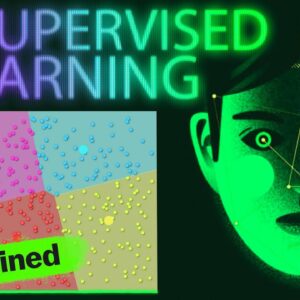As technology continues to advance, machine learning has become increasingly popular in various industries. One of the subfields of machine learning is known as unsupervised learning. In this article, we will provide a simple and beginner-friendly explanation of unsupervised machine learning and its applications. Whether you are just starting to learn about machine learning, or looking to expand your current knowledge, this guide will give you a solid foundation of understanding on this crucial aspect of the field.
Introduction
Unsupervised machine learning is a concept that seems difficult to understand at first, but it is actually quite simple once you understand the basics. Unsupervised learning is a type of machine learning where an algorithm creates patterns and relationships from unstructured data without any supervision or guidance. In this article, we will provide a simple explanation of unsupervised machine learning for beginners.
What is Unsupervised Machine Learning?
Unsupervised machine learning is a type of machine learning where the algorithm is not given any labeled data. The algorithm is fed with unstructured data and the goal is to identify the patterns and relationships between the data with little to no prior knowledge. In other words, the algorithm is given the freedom to learn and identify patterns by itself.
Clustering
Clustering is the most common technique used in unsupervised machine learning. Clustering, as the name suggests, is grouping similar data points together. The algorithm identifies patterns and relationships among the data points and group them into similar clusters.
Association Rule Mining
Association rule mining is another common technique used for unsupervised machine learning. Association rule mining is about identifying the relationship between different variables in the data. This is used for tasks such as market basket analysis, where the algorithm tries to find the correlation between products that are bought together.
Dimensionality Reduction
Dimensionality reduction is the technique of reducing the number of data points without losing significant data. This is usually done to make the data more manageable for analysis and computation, as many unstructured datasets can have millions of data points.
Applications of Unsupervised Machine Learning
Unsupervised machine learning is being used in many industries such as healthcare, finance, marketing, and more. Some of the applications of unsupervised machine learning include:
- Anomaly detection
- Customer segmentation
- Network intrusion detection
- Fraud detection
- Object recognition
Conclusion
Unsupervised machine learning is a powerful tool that helps identify patterns and relationships in unstructured data without any human guidance. The three main techniques used in unsupervised machine learning include clustering, association rule mining, and dimensionality reduction. With the rise of big data, unsupervised machine learning has become a valuable tool in many industries.
FAQs
1. What is the difference between unsupervised and supervised learning?
Supervised learning involves labeled data, whereas unsupervised learning has no labeled data. In supervised learning, the algorithm is given labeled data and guided towards the output. In unsupervised learning, the algorithm identifies the output on its own.
2. What are some of the common techniques used in unsupervised machine learning?
The common techniques used in unsupervised machine learning include clustering, association rule mining, and dimensionality reduction.
3. What are some of the applications of unsupervised machine learning?
Some of the applications of unsupervised machine learning include anomaly detection, customer segmentation, network intrusion detection, fraud detection, and object recognition.
4. Why is unsupervised machine learning important?
Unsupervised machine learning helps identify patterns and relationships in unstructured data that may not have been identified otherwise. This is important for industries like healthcare, finance, marketing, and more.
5. Can unsupervised machine learning be used for object recognition?
Yes, unsupervised machine learning can be used for object recognition. The algorithm identifies patterns and relationships among the data points to identify and group similar objects together.
